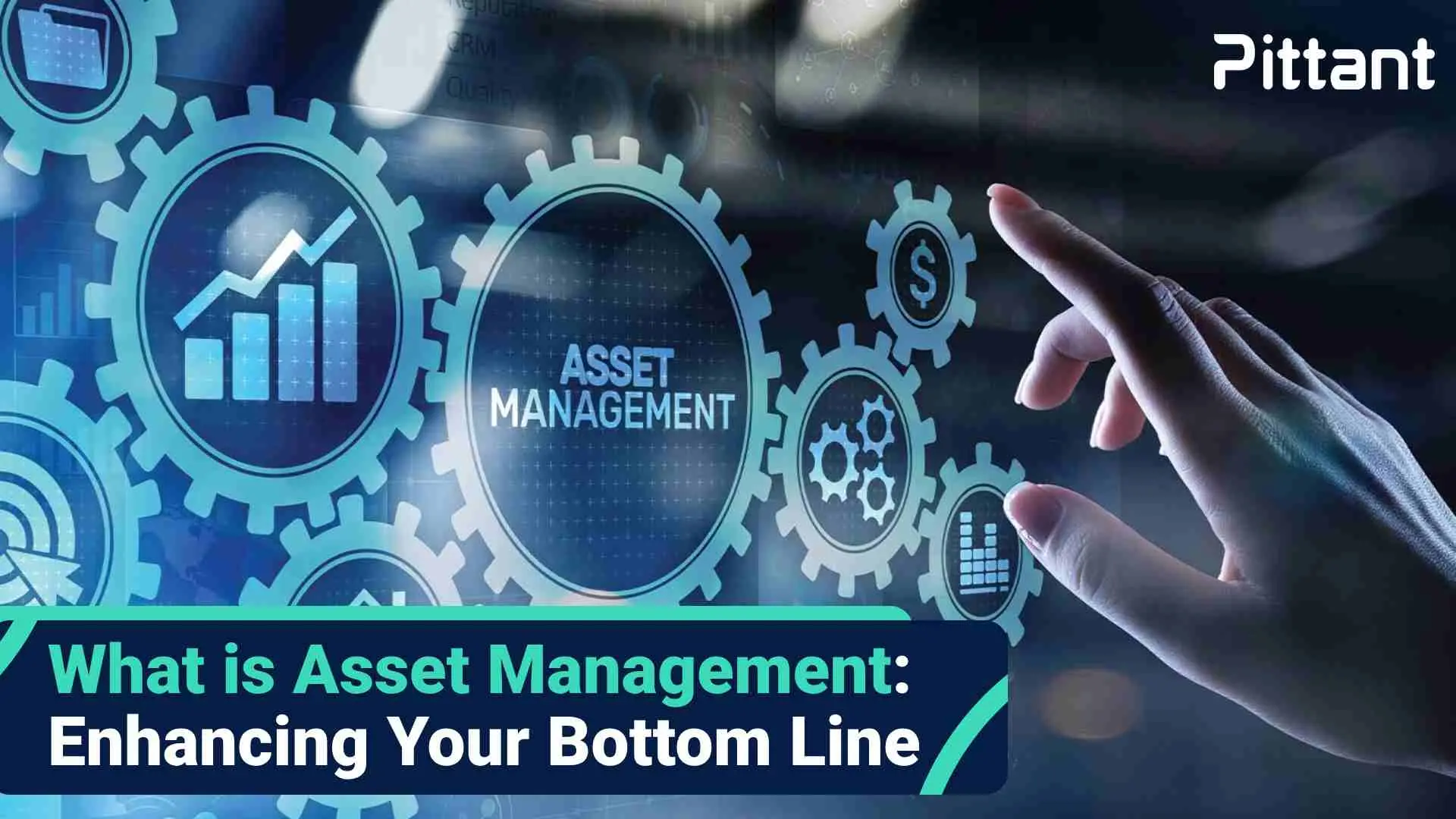The potential of your financial portfolio is unlocked with understanding asset management. Asset management is a vital concept in finance.
What is asset management and how does it contribute to enhancing your bottom line? Well, Pittant will be going into great details about the following:
- the core principles of asset management
- demystifying its significance
- exploring how it strategically optimises your financial resources.
From financial instruments to real estate, the key is to understand how to effectively allocate, monitor, and enhance the performance of your assets.
Pittant will assist you on all things concerning asset management: shedding light on its core principles and illustrating how adopting a comprehensive approach play a crucial role in fortifying your financial standing.
Asset management comprises a range of practices. This is aimed at maximising the value of your investments while minimising associated risks. It is a dynamic process that involves:
- strategic decision-making
- continuous evaluation
- a keen eye on market trends.
Asset Management Importance
Understanding the importance of asset management meaning is important for individuals and organisations alike.
The management of assets involves the strategic oversight of various assets to optimise their performance and contribute positively to your bottom line.
-
Informed decision making:
- At its core, the asset management is making informed decisions to maximise the value of your investments
- At the same time, it will minimise risks
- It goes beyond merely holding assets – it involves actively assessing, monitoring, and adapting to market dynamics
- This approach ensures that your assets align with your financial goals and adapt to changes in economic conditions
-
Risk mitigation:
- One of the key benefits of effective asset management is risk mitigation
- You reduce exposure to potential downturns in specific markets by diversifying and carefully managing your portfolio
- Asset management provides a framework for aligning your investments with your financial objectives
- Whether you are an individual looking to grow your wealth or a business optimising its resources, strategic asset management ensures that your financial strategy is both dynamic and resilient
-
Evaluation and accountability:
- Asset management fosters transparency and accountability
- It involves regular evaluations and reporting, allowing you to track the performance of your investments over time
- This transparency not only provides valuable insights into the health of your portfolio but also enables timely adjustments to capitalise on emerging opportunities or navigate challenges
-
Align investments with goals:
- By actively managing and optimising your assets, you not only mitigate risks but also align your investments with your goals
- Whether you are an individual investor or a business entity, incorporating effective asset management practices is essential for maintaining a robust and adaptive financial strategy
Which Assets are Included in Asset Management
Asset management encompasses a diverse range of assets, each serving a unique purpose in achieving financial objectives. Understanding what asset management is involves recognizing the various categories, including:
- software asset management (SAM)
- digital asset management (DAM).
Software Asset Management (SAM) is the strategic management of an organisation’s software assets throughout their lifecycle. This involves processes such as:
- Procurement
- Deployment
- Maintenance
- Eventual disposal
SAM also:
- ensures compliance with software licences
- optimises software usage
- mitigates risks associated with non-compliance
Digital Asset Management (DAM) takes a broader approach by focusing on the organisation and optimization of digital assets. These assets include:
- Images
- Videos
- Documents
- other digital files
DAM systems facilitate:
- the storage of digital assets
- their retrieval
- distribution of digital assets
This helps enhance collaboration and ensure consistency in branding and content across various channels.
Beyond SAM and DAM, asset management encompasses:
- financial instruments
- Real estate
- Infrastructure.
Financial asset management involves the strategic allocation of investments — such as stocks, bonds, and mutual funds — to optimise returns.
Real estate asset management focuses on managing properties to enhance their value and generate income.
Infrastructure asset management certifies longevity and efficient performance by optimising physical assets like:
- Roads
- Bridges
- Utilities
This comprehensive approach ensures that all assets, whether tangible or digital, are aligned with organisational objectives.
As you see, learning asset management spans a diverse spectrum, ranging from the meticulous management of software and digital assets to broader categories like financial instruments and infrastructure.
Tips for Successful Implementation of an Asset Management System
Successfully implementing asset management — particularly in the context of software asset management — requires a strategic approach. Here are some tips to asses you:
- Define Clear Objectives: Begin by establishing clear objectives for your asset management system. A well-defined purpose will guide your implementation whether it is:
- optimising software usage
- ensuring licence compliance
- or enhancing overall efficiency
- Assess Current Assets: conduct a comprehensive inventory of your existing assets, including software licences, to understand the current landscape. This step lays groundwork for future optimizations and identifies areas that call for immediate attention.
- Invest in Robust Software: Choose a robust software asset management tool that aligns with your organisation’s needs. Look for features that facilitate:
- licence tracking
- usage monitoring
- compliance management
The right software forms the backbone of an effective asset management system.
- Establish Standardised Processes: Standardise your asset management processes to ensure consistency and efficiency. Define workflows for:
- Procurement
- Deployment
- Maintenance
- Disposal of software assets
Clear processes streamline operations and reduce the risk of non-compliance.
- Educate and Train Staff: Make sure that your team is well-educated on the asset management system and its processes. Training programs and ongoing education:
- foster a culture of compliance and efficiency
- minimises errors
- optimises utilisation
- Implement Regular Audits: Conduct regular audits to:
- verify the accuracy of your asset inventory
- ensure compliance with licensing agreements.
Audits identify any discrepancies. It allows for corrective actions before they escalate.
- Seek Expert Guidance: Take guidance from experts or consulting services specialising in software asset management. Their expertise provides valuable insights, ensuring a smoother implementation process.
Specify Your Assets
Here is a list of key actions to take in specifying your assets:
- Comprehensive Asset Inventory: Conduct a thorough inventory of all assets, including software and digital content with document specifics such as:
- Types
- Versions
- and usage patterns
- Identify Software Licences: Clearly outline and document all software licences held by your organisation. This includes details on:
- licence types
- terms
- renewal dates
- User Access and Permissions: Specify user access levels and permissions for both software applications and digital assets. Clearly define who has access to what, minimising security risks.
- Digital Asset Metadata: In the case of digital assets, establish a robust metadata structure. Clearly define metadata categories such as:
- file types
- creation dates
- and usage rights for efficient retrieval
- Asset Lifecycle Management: Specify the lifecycle of each asset, outlining stages from procurement and deployment to maintenance and eventual disposal or renewal.
- Usage Policies: Clearly define policies regarding the usage of software and digital assets. Include guidelines on:
- acceptable usage
- compliance requirements
- and potential consequences for violations
- Integration Requirements: If integrating with existing systems, clearly specify integration requirements for seamless data flow. This ensures that your asset management system operates cohesively with other organisational tools.
- DAM Solution Criteria: When selecting the best digital asset management solution, specify criteria such as:
- scalability
- user-friendliness
- collaboration features
- and compatibility with existing workflows
- Training and Support Needs:
- Specify the training needs for users interacting with the asset management system.
- Outline the support mechanisms in place for addressing any issues or questions that arise
Implement Tracking Systems
Implementing tracking systems is an aspect of learning asset management, especially in the realms of software asset management (SAM) and the adoption of the best digital asset management (DAM) practices.
Here is a structured list of key actions to effectively implement tracking systems:
- Utilise Robust SAM Software: Implement a sophisticated SAM software solution that aligns with your organisation’s needs.
Choose a tool that offers comprehensive tracking capabilities, including:- licence management
- usage monitoring
- and compliance tracking
- Establish Centralised Database: Create a centralised database for tracking all software assets. This database — providing a holistic view of your software inventory —- include details such as:
- licence information
- version history
- usage metrics
- Implement User Access Logs: Integrate user access logs within your SAM system. This feature tracks who accesses specific software applications, aiding in monitoring usage patterns and ensuring compliance with licensing agreements.
- Utilise Digital Watermarking for DAM: In digital asset management, employ digital watermarking techniques to track the usage and distribution of digital assets. Watermarks embedded in files allow for traceability, safeguarding intellectual property.
- Asset Tagging and Labelling: Employ asset tagging and labelling for physical and digital assets. This practice simplifies tracking by assigning unique identifiers to each asset, facilitating easy retrieval and monitoring.
- Implement RFID Technology for Physical Assets: For physical assets, implement Radio Frequency Identification (RFID) technology. This enables real-time tracking, providing accurate and up-to-date information on the location and status of assets.
- Regular Audits and Checks: Schedule regular audits and checks within your tracking systems. This proactive measure:
- ensures data accuracy
- identifies discrepancies
- allows for timely corrective actions
- Real-Time Monitoring: Leverage real-time monitoring capabilities within your SAM and DAM systems. This enables instantaneous tracking of software usage, digital asset distribution, and any changes in asset status.
Monitor performance regularly
Regularly monitoring performance is a fundamental aspect of understanding what is asset management, especially in the domains of software asset management (SAM) and getting the best digital asset management (DAM) practices. Here is a list of key actions to ensure ongoing performance monitoring:
- Establish KPIs: Define Key Performance Indicators (KPIs) relevant to your asset management objectives. These could include metrics such as software utilisation rates, compliance levels, and digital asset retrieval times.
- Scheduled Performance Reviews: Implement a schedule for regular performance reviews. This proactive approach allows you to assess the effectiveness of your asset management systems at predefined intervals.
- Usage Analytics for SAM: Utilise usage analytics within your SAM system.
- track software usage patterns
- identify underutilised licences
- optimise allocation based on actual needs.
- DAM Analytics for Digital Assets: Leverage analytics tools within your DAM system. Monitor the performance of digital assets, such as:
- download frequencies
- user engagement
- content popularity
- Compare Actual vs. Projected Performance: Regularly compare actual performance against projected benchmarks. This assessment provides insights into the effectiveness of your asset management strategies and identifies areas for improvement.
- User Feedback Mechanisms: Establish user feedback mechanisms for both SAM and DAM systems. Encourage users to:
- provide insights into system usability
- identify any challenges faced
- suggest improvements
- Conduct Regular Audits: Schedule regular audits of your asset management systems. These audits:
- ensure data accuracy
- verify compliance
- and identify any discrepancies that have arisen over time
- Benchmark Against Industry Standards: Benchmark your asset management performance against industry standards. This comparative analysis allows you to gauge your organisation’s standing in terms of best practices and industry norms.
Conclusion
Comprehending what asset management is is pivotal for organisations aiming to enhance their bottom line. By strategically overseeing various assets, from software and digital content to financial instruments, businesses optimise performance and minimise risks. The implementation of robust tracking systems, coupled with regular performance monitoring, forms the foundation of effective asset management.
Embracing these practices ensures adaptability, compliance, and the continual improvement of strategies. Ultimately, what is asset management becomes not just a question but a dynamic process that propels organisations toward financial resilience and sustained success.
If you want to learn and read more about this and other topics, be sure to check our interesting insights. If you want to know more about the services we provide you, just make a visit to our contact section.





